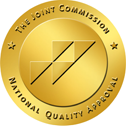
Too often, people struggling with addiction are looked down upon and shunned by society — the assumption is that their drug abuse is their own problem and they are just hurting themselves. But that is a narrow view of what is a large-scale societal issue.
Drug addiction is not just a compulsion but an actual disease that requires treatment and compassion, just like any other chronic health condition. And addiction affects many more people than just the addicts themselves. Drug abuse touches many corners of society — and most likely even your life, though you may not realize it. An addiction to drugs comes at a great cost, on both an individual and community-wide scale.
How Drugs Affect the Brain
Drugs have a powerful effect on the human brain, and the roots of addiction take shape there. In essence, drugs have the capability to impact how the brain receives signals and messages via its system of neurons and neurotransmitters. Neurons are cells in the brain that communicate information, and they do so by sending and receiving the neurotransmitter molecules.
The impact on the brain is determined by the type of drug being abused. According to the National Institute on Drug Abuse, marijuana, heroin and drugs with an opiate effect can act like a neurotransmitter, which the neurons send to each other to conduct signals and messages. Because of that, these drugs activate neurons—but because they aren’t real neurotransmitters, drugs send abnormal signals. Conversely, stimulants such as cocaine and methamphetamine trigger an overload release of neurotransmitters, which disrupts the brain’s chemistry.
Which Parts of the Brain do Drugs Affect?
Drugs impact many parts of the brain, which means substance abuse affects many normal bodily functions. The brain stem, basal ganglia, extended amygdala and the prefrontal cortex are just some of the parts of the brain that can be negatively affected by drug use. Because these areas control everything from stress response to decision making to heart and breathing rates, drug use can take a terrible toll on the human body and mind.
Even knowing this, it’s very difficult for people to just stop abusing drugs cold turkey. That is because drugs create a pleasurable effect that is activated in the brain’s reward center, located in the basal ganglia. Typically, this area receives the neurotransmitter called dopamine, which is released when we are experiencing a situation or a sensation we find enjoyable. This dopamine trains our brain’s reward center to recognize this pleasurable activity, which reinforces our desire to repeat it. This is all well and good when, say, someone is eating chocolate cake. But when someone is taking drugs, it creates an overwhelming tide of dopamine, much larger than normal. Thus the cue between pleasure and drug use is formed and reinforced—the brain is training itself to crave that drug, and to use it over and over again. Regular dopamine surges connected with normal, non-drug-related activities, can’t compare, and soon these everyday pleasures of life are not sought out anymore. The focus is on using the drug for the incredible euphoria it can produce.
Drug Use Frequency and Tolerance
The problem, however, is that the more often a drug is used, a greater tolerance level develops. That means that if a person typically takes cocaine once a day to get high, eventually they won’t get the same kind of high as when they first started using. So they might increase their frequency of use to two times a day, and perhaps take a greater quantity of the drug each time. This ever-increasing cycle of tolerance and frequency continues to snowball until a dependency develops, one in which the drug overtakes most of the person’s waking hours. Without intervention and treatment, this drug abuse can spiral into addiction, and carry with it an increased risk for overdose and even death.
Health Effects of Drug Use
Obviously, drug use can ravage an individual and has the capacity to destroy someone’s life. That destruction can take many forms. There is, of course, the health cost. Overdose and death are on the extreme end, but there is an inherent risk of both every time someone takes drugs. In addition, there are other health issues that can be caused by drug use. Physically, these can include
- High heart rate and high blood pressure
- Loss of appetite
- Disrupted sleep patterns
- Increased risk of heart attack or stroke
- Organ damage
- Lung or heart disease
There are also emotional and mental costs, too. Drug addiction can cause:
- Mood swings
- Irritability
- Anger
- Delusions or hallucinations
- The inability to focus or make decisions
- Paranoia
- Depression
- Anxiety
- Violent tendencies, depending on the substance being abused
How Drug Use Affects Relationships
Drug abuse can also be detrimental to a person’s relationships. Drug addiction can overtake someone’s life, which means they don’t have the capacity to maintain healthy relationships with friends, family members, or even acquaintances. The addict may be gone for long periods of time and no one knows his whereabouts. Or perhaps the person lies to cover up the drug use, and that leads to an eradication of trust. In some relationships, the drug user and a partner, child or sibling enter into a co-dependent or enabling relationship that is unhealthy for both parties involved. Many times, it is only through treatment and therapy that these relationships can possibly be repaired.
Finally, drug addiction can erode one’s self-esteem and their sense of value. Drug addiction can detract from job performance—if the person can even be bothered to show up for work. As basic life functions are lost in the swirl of drug use and the person lacks any interest in the pursuits or passions that used to be enjoyed, they can lose their sense of self and cease to be a productive member of society. But society loses out in other ways, too.

How Drug Use Affects Communities
Communities also suffer from the effects of drug addiction. Overall, substance abuse costs the United States more than $740 billion a year in terms of health care, work productivity and crime; of that figure, illicit drug abuse costs $193 billion and prescription opioid abuse costs another $78.5 billion.
The impact is wide-ranging and staggering. For instance, a greater amount of substance abuse-related crimes means a community has to fund more police officers, and jails have to increase personnel staffing because of an increase in the number of inmates. Courts can become overburdened with too many drug cases, and the victims (for instance, a business that was robbed or burglarized) may also incur costs. If a community experiences a rash of drug-related crimes, it could gain a reputation for its “bad” neighborhoods and experience a loss of property values and sales tax revenue as people move out or avoid visiting or living there.
The societal cost of drug abuse is also a generational issue. The science-based nonprofit organization Center on Addiction states that 70% of children who are neglected or abused come from homes where a parent has a drug or alcohol problem. To fund social service child welfare programs for these families costs an estimated $23 billion each year. In addition, children of addicts may have a higher risk for substance abuse problems of their own, as well as behavioral, emotional or social issues.
How Drug Use Affects the Economy
Workplace productivity can also suffer when employees are abusing drugs. Employees under the influence may make costly errors, not show up for work (perhaps requiring the business to hire a temporary substitute), or incur health care costs that could affect the company’s insurance plan. And speaking of health care, drug abuse costs can seem astronomical. The National Drug Intelligence Center, a division of the U.S. Department of Justice, stated that in 2006 almost 1.75 million emergency room visits were related to drug use. The National Institute on Drug Abuse estimated that annual health care costs caused by illicit drug use totaled $11 billion, with another $26 billion from prescription opioid abuse.
The High Cost of Drug Abuse
In essence, the most effective way to reduce all costs related to drug abuse is to focus on addiction prevention and treatment programs. It has been calculated that treatment programs can lead to a savings-to-cost ratio of 12 to 1 in regards to crime and health care. Plus, individuals who successfully complete an addiction treatment program have the opportunity to improve their health, successfully repair dysfunctional relationships and re-enter the workforce with renewed productivity.
The key is finding a rehabilitation program that focuses on individualized, whole-person treatment that equips someone for life in recovery. Casa Palmera has proven success in helping people who are struggling with drug addiction and the toll it is taking on their lives. If you or someone you know needs help, contact us today.
Related Articles on Casa Palmera:
- What Does 40 Days of Sobriety Look Like?
- How Addiction Treatment Can Help Your Physical & Mental Health
- Hope in Overcoming Addiction




